If we were looking for the princess of Western Macedonia, then Kastoria would surely take this title with ease. One of the most charming places to visit in northern Greece, with unique natural beauty, impressive mansions, Byzantine temples and a combination of tradition and modernity that is difficult to meet elsewhere.
A few words about the city
Kastoria is located in Western Macedonia and is the capital of the homonymous Regional Unit. Its name is not accidental, since it comes from the many beavers that lived in the area for centuries. It is founded on the peninsula of Lake Orestiada or as it is widely known Lake Kastoria, at an altitude of 703 meters above sea level. Of particular interest is the fact that, due to the amphitheatric way in which the city is built, since it is surrounded by the lake, it often gives the impression that it looks like an island! Today it has about 20,147 inhabitants, being one of the most attractive destinations in the region. Beyond the lake, Kastoria is famous for its furs. Its inhabitants have been active in this profession for more than five hundred years, with the fur industry being one of the fundamental reasons that the city experienced periods of prosperity and prosperity. In its long history, Kastoria has known a few conquerors, but still retains a significant number of Byzantine churches, heirlooms and mansions waiting to be discovered.
10) Koresteia
In the tenth place I have placed the adobe villages called Koresteia and are located a breath away from the city of Kastoria. It is a special area, deeply marked by history, with purely reddish brick settlements that survive from the late 19th and early 20th centuries. Each settlement has its own name: Gavros, Kranionas, Halara, Melas, Mavrokampos, Makrochori, Agios Antonios and others. But the locals know the area as Gavros. The most famous of these villages is, of course, Melas, since it is the place of death of the Macedonian Warrior Pavlos Melas. In the village you will also find the Museum of the Macedonian struggle.
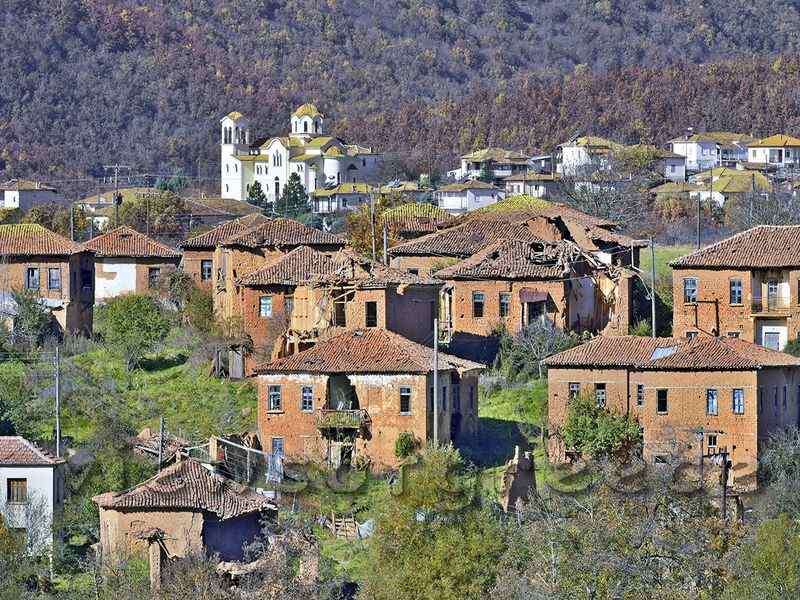
9) Nestorio
Perhaps most of you know Nestorio from the famous River Party that is organized every summer there, but this village has much more to offer. It is essentially the gateway to the valley of Grammos, a virgin world, different from the usual. The nature that surrounds it is among the most beautiful in Europe, while the village itself with its traditional stone houses and cobbled streets, will reward you without any doubt.
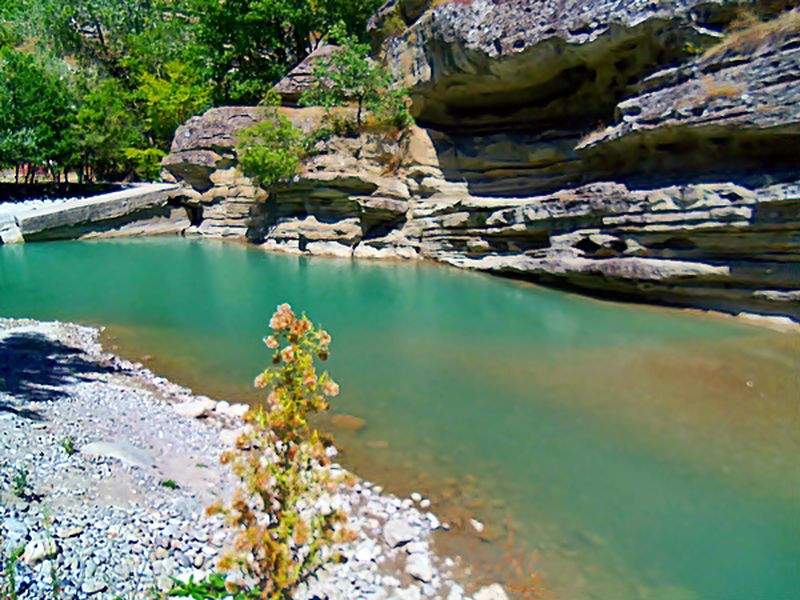
8) Aposkepos
If you want to see the lake and the city of Kastoria from above, there is only one solution. So all you have to do is drive just six kilometers to the south-western slopes of Mount Vitsi and the mountain village of Aposkepos. This picturesque settlement with its characteristic cobbled square, century-old plane trees and twelve stone fountains, which bring water from the mountain, will charm you. In fact, many choose this village for their stay, as in addition to the superb view, it has kept its picturesqueness and authenticity.
7) The Museums
In Kastoria there are many interesting museums and art spaces that deserve your attention. Briefly, the most noteworthy are the Museum of the Macedonian Struggle in Doltso, the Folklore Museum in the Nerantzis Aivazis mansion and the Delinaneio Folklore Museum, the Costume Museum in the Emmanuel brothers' mansion, the Byzantine Museum in Dexamenis Square and the Wax Museum in Mavrochori.

6) Aquarium
It is certainly not possible to leave Kastoria without visiting the impressive aquarium of the city. This is the largest freshwater aquarium in the Balkans, housed in a two-storey building of 450 square meters! Being there you will have the opportunity to get to know most of the fish and other aquatic species that live in the lakes and rivers of Greece. The aim of the aquarium, as well as the authorities of the region, is to send a clear environmental message for the protection of aquatic ecosystems plagued by degradation and pollution.
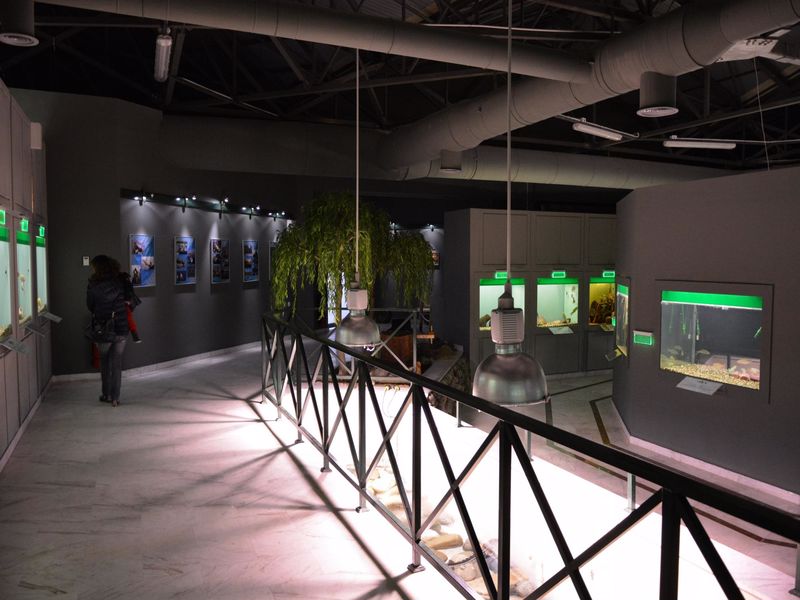
5) The Lake settlement of Dispilio
Just outside Kastoria, you will come face to face with the most special attraction of the wider area. I refer, of course, to the Lake settlement of Dispilio. About a century ago, when the level of the lake began to recede, some finds from the Neolithic period came to light. So initially created in the area an exhibition area of these objects, and then an attempt was made to represent an entire outdoor settlement! Upon entering the lake settlement, you will have a free tour, where you will learn useful information and gather interesting images about the life of the people at that time.
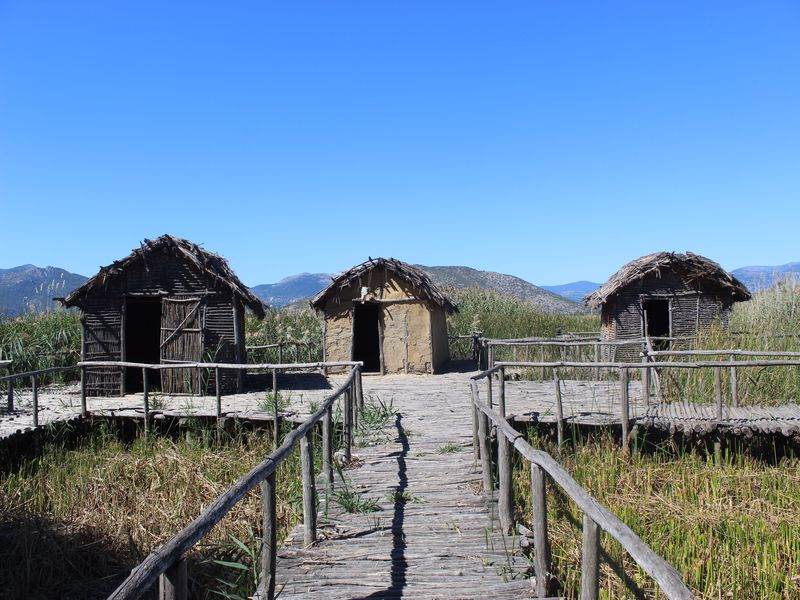
4) Monastery of Panagia Mavriotissa
This church was originally called Panagia Mesonisiotissa, because it is located approximately in the middle of the peninsula. In the years of the Turkish occupation, but also later, the inhabitants of the opposite village, Mavrochori, took care and protected the monastery and so it was renamed Panagia Mavriotissa. The catholikon of the monastery is built in the 11th century, while the chapel of St. John was constructed in the 19th century, which means it is post-Byzantine. What makes this monastery unique is the elaborate frescoes that adorn its exterior! These depict emperors of Byzantium and were edited by five different hagiographers from the 12th to the second half of the 14th century.
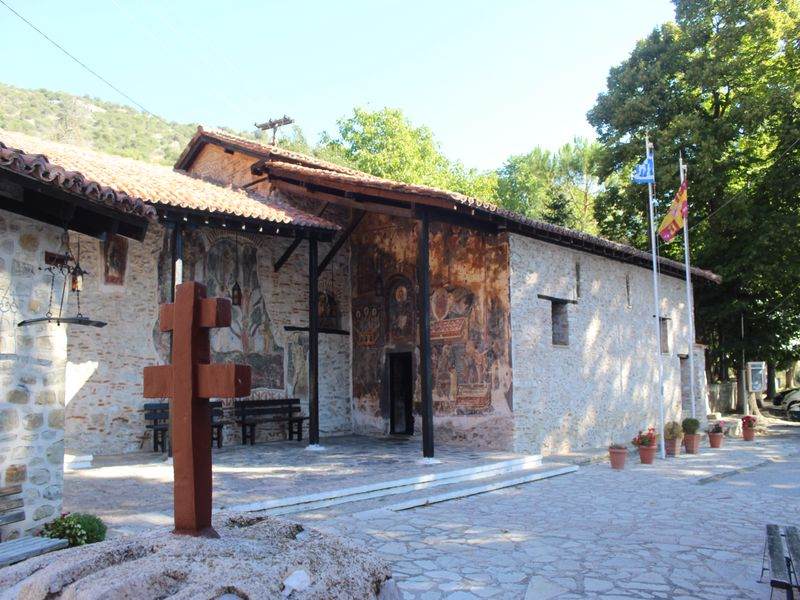
3) Cave of the Dragon
A few meters from the monastery, you will find one of the most interesting things that you can see in Kastoria. I refer, of course, to the Cave of Dragon. The visit time is limited and lasts about twenty minutes, since oxygen is limited. Accompanied by a guide you will see impressive stalactites, seven underground lakes, ten halls and five tunnels. The name of the cave comes naturally from a legend. According to this legend, many centuries ago this cave was a gold mine which guarded a dragon. The then king of the city wanted the gold that was hidden there, so he promised a great reward to whoever killed the Dragon. Then a stout young man appeared, who, after a great battle, finally killed the Dragon. But when they entered the dark cavern to take their spoils, an unearthly voice was heard saying, "he who stoops to pick up a handful of the mud he treads upon will regret it." Most of them ran to the exit, but those who dared to defy the command and take the mud, realized that the gold had turned into liquid gold dust!
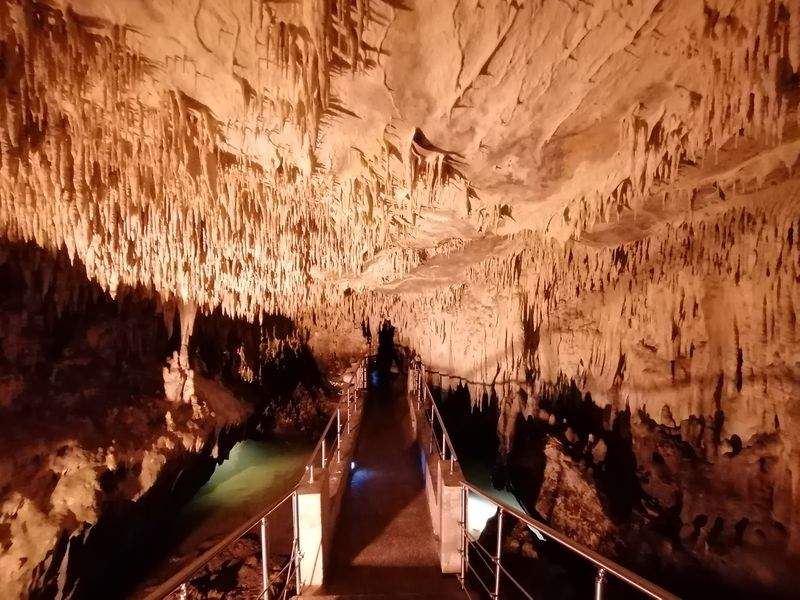
2) Doltso
Doltso is the old town of Kastoria, with this word meaning sweet in Italian. Walking around this beautiful district it is easy to see why they have given it this specific name. It is the most peaceful, authentic and atmospheric part of the city. Full of elegant mansions, byzantine churches, cobbled streets, remarkable museums and an aura of another era. In the big square of Doltso, the famous kastorian Carnival, Ragoutsaria, takes place. From January 6 to 8, the whole city lives in the rhythm of a frantic folk spree that has nothing to do with Halloween. But they are similar in the masquerade, the drinking, the all-night parties and the non-stop sound from the famous Halkina of Kastoria!

1) Lake Orestiada
Of course, the lake of Kastoria, Lake Orestiada, could not be missing from the top of the list. It is the eleventh largest lake in Greece, with its depth ranging from 1.4 to 12 meters! It is the trademark of the city, while it is one of the most beautiful lakes in the Balkans! I think its tour is the best one can do in the wider area, as the lakeside route is simply magical. You can go around the lake either with your car or on foot since we are talking about a distance of only 7 kilometers, to live the experience to the fullest. Finally, when the weather permits, you can board one of the boats there and explore the lake by boat.

How to go
There are two ways to reach Kastoria. The first is to approach the city by road, either with your own means of transport via Egnatia Street or with a bus. The second is by air. Yes, you read that right, in Kastoria and more specifically 10 km outside the city in Argos Orestiko, there is the State Airport of Kastoria "Aristotelis", where domestic and international flights take place.
What to eat
The Kastorian cuisine is special; it uses many of the local products as protagonists. So in the city and in general in the wider area you will find very tasty beans, wild mushrooms, cheeses (mainly kefalotiri and kefalograviera), trachana, chylopites, meat and fresh fish from the Ionian Sea. As for drinks, don't forget to try local tsipouro and liqueur made from helmets and walnut. A very good option to taste the traditional delicacies is En Kairo.
If this article seemed interesting or contributed to your quality information, then you can like my facebook page: o_thessalonikios or follow me on instagram!
Mouzakidis Pantelis









